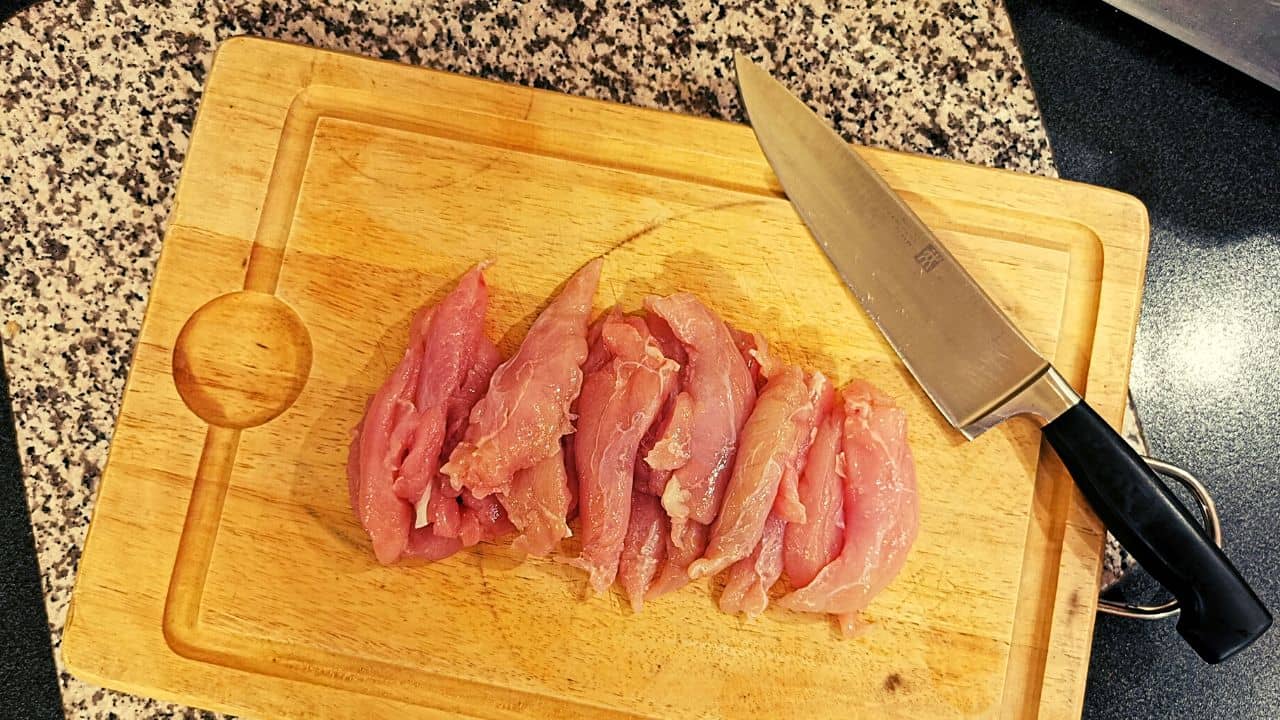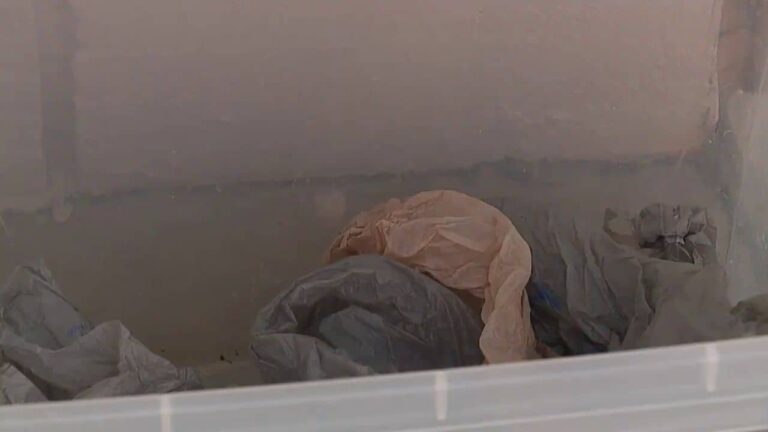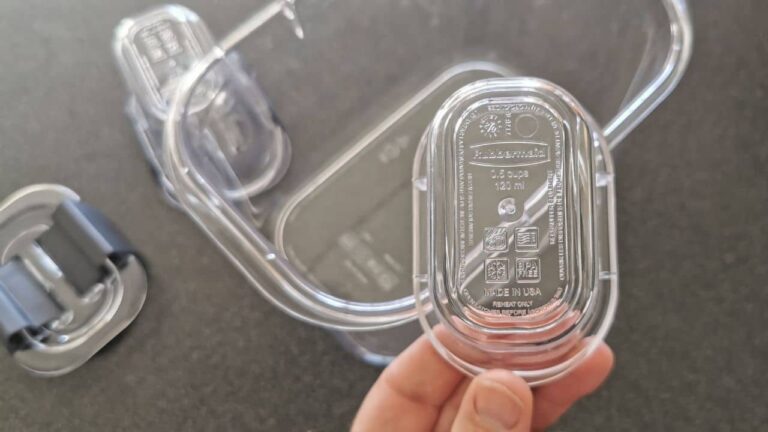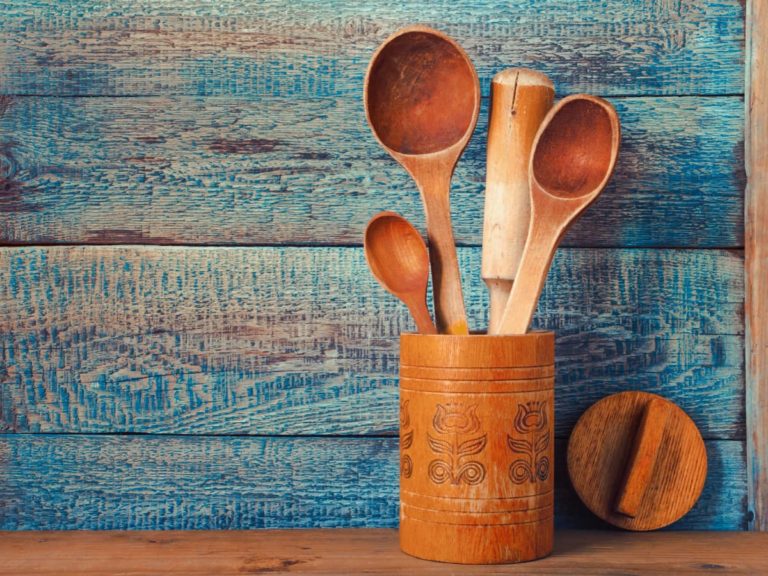Is it OK to Cut Chicken on a Wooden Cutting Board? (Answered)
Most people may believe that it makes no difference what you use to prepare cooking materials, especially when it comes to meat. However, if you’ve ever wondered if you use a wood or plastic cutting board, this article is for you. After all, food preparation is necessary. This brings light to the question of cutting raw chicken on a wooden board and if it is safe to do so.
No, it is not okay to cut chicken on a wooden cutting board. Bacteria may thrive in unusual places, which is why separate cutting boards are essential in the kitchen. A separate chopping board for meat and fowl can help you avoid food illness and potential food contamination in your kitchen.
Start off by thinking of what you are to chop and your current sanitation practices. If you can’t take the thought of giving up your wooden cutting board, make use of it for fruits, veggies, cheese, and bread. However, you might want to read about certain risks of cutting chicken on wood and alternatives to it before you reach a decision.
The Risks of Cutting Chicken on a Wooden Cutting Board
Germs can be found in any uncooked meat, including beef, poultry, and shellfish. The scary part is that germs may withstand a hot, soapy wash and remain in the crevices of a cutting board when you prepare these items on it. What is the ultimate result? You run the danger of infecting other things that were cut on the same board.

While this is less of a concern with meat cooked to a safe internal temperature, fruits and vegetables may absorb some of the germs from your cutting board. Because of the potential of cross-contamination, health professionals advise avoiding washing chicken before cooking.
Fortunately, minimizing the risk is simple. Keep at least two cutting boards on hand, one of which should be designated for slicing raw meat, poultry, and seafood. I have a few tips in store for you but before that, let’s see if wooden boards should generally be avoided.
Are Wooden Cutting Boards Generally Bad?

Wooden cutting boards are excellent for both veggies and some but not all protein. It is not suggested to cut chicken on a wooden cutting board because bacteria will settle into the wood grain and be difficult to remove. Despite their appealing look, the USDA does not advocate using wood cutting boards with meat or poultry. Bacteria may develop inside the pores of the wood and contaminate food. So, what to do then?
Don’t worry. You won’t be asked to part with your favorite wooden board. Stick to wood for hard veggies like carrots, turnips, and potatoes. The broader, sturdier surface better grabs the vegetable, and the solid surface of the wood produces cleaner slices than the occasionally scratchy plastic surface of synthetic cutting boards.
Cutting Board Material
You should look at the substance of the board during meal prep. You can either select a wood cutting board or one with a nonporous surface, such as plastic, marble, glass, or pyro ceramic.
Note that when working with meat, the USDA recommends using a non-porous cutting board. Acrylic or glass cutting boards are also handy kitchen tools. As a result, clean-washing plastic boards are suggested for poultry and fish, and if you’re only chopping an onion or smashing a few cloves of garlic, go with plastic as well. It is simpler to remove the stink since it does not penetrate as deeply into plastic.
Another alternative to wood is bamboo cutting boards. They are more durable than wooden cutting boards and have fewer pores. Because bamboo absorbs relatively little moisture and resists knife scars, it is more germ resistant than other woods. If desired, you may sterilize bamboo cutting boards after washing them with hot soapy water.

Here is a general comparison of the common type of cutting board materials and their respective properties:
| Cutting Board Material | Properties |
|---|---|
| Wood | Does not dull knives Porous and difficult to clean thoroughly Not suited for heavy chopping |
| Bamboo | Sustainable Absorbs less water than wood More durable and germ-resistant than wood |
| Plastic | Made of polyethylene (PE) or polypropylene (PP) Dulls your knife faster than wood/bamboo Can be washed and sanitized easily |
| Glass | Mainly used for serving rather than cutting Dulls your knife faster Fragile and potentially harmful |
| Marble | Dulls the blade the most Has a hard surface Easy to clean |
| Silicone | Dulls your blade less than plastic, marble, and glass Non-slip and flexible Resists bacteria growth |
Additional Tips
As hinted above, using two cutting boards helps immensely: one for raw meat, poultry, and shellfish and another for fresh vegetables and bread. In this way, bacteria on raw meat, poultry, or fish cutting boards will be prevented from infecting a non-cooking product.
You are also encouraged to clean all cutting boards with hot, soapy water after each use, then rinse with clear water and air drying or pat dry with clean paper towels. This includes dishwasher-safe acrylic, plastic, or glass boards, as well as solid wood boards. However, laminated boards are a different case as they may crack and split.
Here’s a step-by-step guide for sterilizing:
- Make a solution of 1 tablespoon unscented liquid chlorine bleach per gallon of water to sterilize wooden and plastic cutting boards.
- Allow the bleach solution to seep into the surface for several minutes.
- Clean paper towels should be patted or aired dry after rinsing with clean water.
As difficult as it sounds, remember to replace or repair damaged cutting boards. Plastic and wood cutting boards can deteriorate over time. Hence, cutting boards should be abandoned when they get severely worn or have difficult-to-clean grooves.
The Takeaway
Every home cook should be able to safely handle raw food. However, safe food management does not stop with storing meats at appropriate temperatures and ensuring that they are thoroughly cooked before reaching your plate. You must also consider meal prep and cutting, where hygiene is a major concern, especially when it comes to raw meat.
There are no hard and fast laws specifying that meat should be placed on plastic, vegetables on wood, serrated knives on wood, and so on. Above all, it’s about convenience and food safety. As long as you practice excellent food safety, the material of your cutting board is less important than the sharpness of your knife and your cooking abilities.
Here Are 5 Cutting Board Brands That I Recommend (material → plastic)
Sources
- Food Safety and Inspection Service: Cutting Boards
- Taste of Home: The Gross Reason You Need at Least Two Cutting Boards







